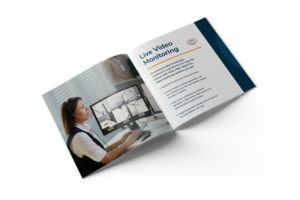
How to protect employee privacy and employee security at the same time
Business leaders know how difficult choosing a security system can be. Every organization has specific needs depending on size, industry, and budget, but those are far from the only considerations. Leaders must put serious thought into how to protect their employees’ privacy without sacrificing overall security.
Getting it right is a big challenge—but can be the difference between an efficient and productive office and a disorganized and mistrustful one.
Let’s explore why finding a balance between privacy and security is so important and how companies can achieve the right blend of both.
There is no success without safety
Business owners understand the importance of ensuring a safe and secure physical environment. Companies that offer little or no security infrastructure can suffer from theft (both internal and external), compromised data, and harassment from intruders. It’s obvious enough but worth stating: a professional environment in which the staff or the company property is at risk will struggle to succeed.
Searching for a security partner can be overwhelming but has obvious benefits.
A modern system offers comprehensive services that together protect the office and its staff, with features that can include:
- Security cameras: Observe the office and its premises, which can assist in solving and reviewing a range of issues and disputes.
- Burglar alarm systems: Offer protection against intrusion, safeguard the physical grounds and the property within.
- Live video and alarm monitoring: Combines video analytics and expert analysis, gives businesses detection and response capabilities that can stop vandalism and theft before it occurs.
- Access control: Monitors the system with a fully integrated dashboard that gives the user full control over the features.
- Security guards or patrol: Trained experts who observe the property when nobody is around to maintain security.
These resources are important: they help increase the sense of safety for employees, and businesses can use them in a variety of ways.
However, it’s not as simple as the more security the better.
Maintaining respect for privacy and personal space
While the benefits of a security system may be clear, the downsides can be harder to predict. Thinking holistically about the repercussions of added security measures will help business leaders implement protections that make sense for their company and don’t alienate their employees.
A workplace with overwhelming protocols, unclear security goals, or omnipresent surveillance technology can create an unhealthy and unproductive atmosphere, with the following implications:
- Perceived invasion of privacy: Cameras make sense to employees in most circumstances, but too many cameras in too many locations can make workers feel like their personal space and privacy isn’t valued.
- Lack of trust between employees and the employer: Another result of implementing surveillance without the right messaging is your workforce might perceive themselves as the primary object of the surveillance. Sending that type of message can damage trust and productivity.
- Increased anxiety: The line between feeling protected and feeling relentlessly tracked is thin. Some workers can do great work while feeling “watched,” but others may not. Overbearing security measures can heighten stress and anxiety, and can create unwanted issues for staff.
- Impact on socializing and community-building: Excessive surveillance can create a subtle chilling effect in the common spaces of the workplace. It may keep people from having the types of conversations that make an office vibrant, collaborative, and fun.
Finding the right balance between security and privacy is tricky, but the right system along with clearly communicated goals can help achieve both.
A customized system that protects your business and the privacy of your team
Building strong security hinges on choosing the tools that best fit your needs, dynamic access control over those tools, and clear communication with employees.
If there are new security cameras placed throughout the office, employees should understand the reasons why. Make them aware of all security protections in place, such as alarms and locks, the motivation behind those tools, and training on how to utilize them. Break rooms and bathrooms should be off limits, giving employees private spaces they know aren’t being watched.
Transparency allows a security system to be just that―a secure system―and not a source of unnecessary tension or paranoia. The right combination of resources and planning can make any business more safe and productive.
With customizable solutions and numerous features including alarm monitoring, access control with user-friendly dashboard, and a staff of security experts on call, Bay Alarm has your security needs covered. Contact us today to learn more.

